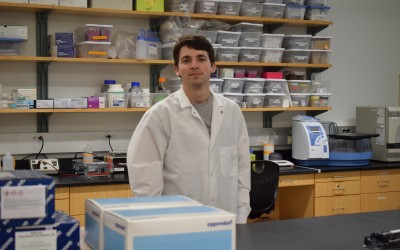 |
Tuesday, March 26, 2024
March: A Day In the Life of...A Research Technician: David Dayan As a former undergraduate researcher and now postgraduate research technician with the Cornell Wildlife Health Lab, I have mostly worked on a study of environmental contaminants in hunter-harvested... Category: Wildlife 411 |
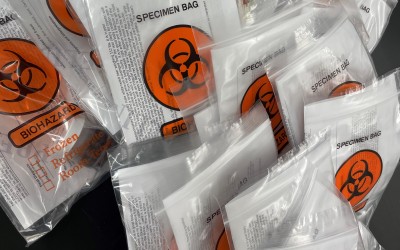 |
Thursday, February 29, 2024
February: A Day in the Life of...A Research Support Specialist: Melissa Fadden My role within the lab is a complex balancing act of time management, project and sample organization, and managing our case data stream. I guide incoming diagnostic case submissions,... Category: Wildlife 411 |
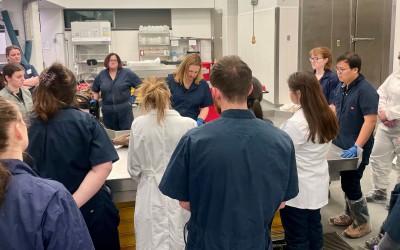 |
Tuesday, January 30, 2024
January: A Day in the Life of…A Wildlife Disease Ecologist: Krysten Schuler Hi everyone, we’re starting this monthly series “A Day in the Life of…” to give you a snapshot of the daily happenings of us at the Cornell Wildlife Health Lab (CWHL). Granted, not every... Category: Wildlife 411 |
 |
Wednesday, November 15, 2023
Reimagining the Science Behind Sample SizeWildlife of the same species regularly gather in groups on the landscape. Some groups represent families. Other groups arise when animals congregate to, say, sleep in a den for the night, visit a reliable water hole during the dry... Category: In the News |
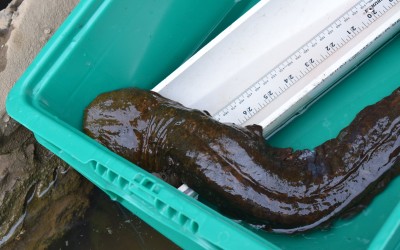 |
Tuesday, November 14, 2023
Go Take a Hike - and Call It Work! The Importance of Field ResearchYou may have heard about biologists and ecologists going “in the field.” What does this mean, and why do they bother? If you’ve ever seen a person shivering in a snowy field holding binoculars and counting winter raptors, you’ve... Category: In the News |
 |
Friday, June 2, 2023
Decoding the Craft of Science WritingTopics to consider in science writing: important lessons to learn for any early career scientist So, you are going to someday become an independent scientist. Regardless of your current training level, whether you are seeking a... Category: In the News |
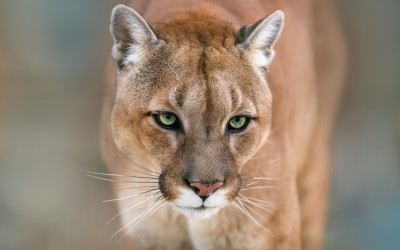 |
Tuesday, March 28, 2023
A Behind the Scenes Look at Wildlife Chemical Immobilization TrainingThe wolves were howling when I arrived at the Wildlife Science Center (WSC) in Stacy, MN for a Wildlife Capture and Chemical Immobilization course put on by the Center for Wildlife Studies. The WSC is a 501(c)(3) nonprofit that is home... Category: In the News |
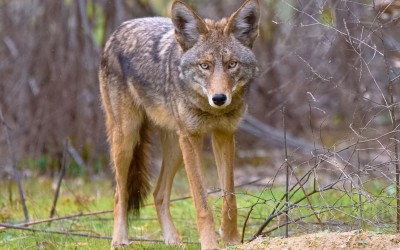 |
Monday, February 13, 2023
Weird & Wonderful Wildlife - The CoyoteThe coyote, Canis latrans, is not a large animal; people are surprised at their size once they see it in person. They are mid-sized members of the dog (canid) family, usually weighing no more than 45 lbs. and can easily be mistaken for... Category: Wildlife 411 |
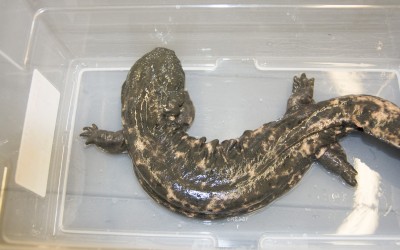 |
Monday, January 30, 2023
Researching Vaccination in Wildlife Leads to New Insights in Amphibian DiseaseHave you ever wondered how some people avoid getting sick even when they’re surrounded by sick people? Disease can seem pretty random- either you catch a bug from your coughing friend, or you get lucky and stay healthy. Though chance... Category: In the News |
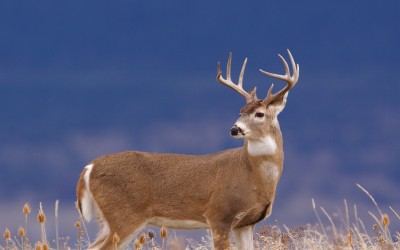 |
Tuesday, December 13, 2022
White-tailed Deer: A Potential SARS-CoV-2 Reservoir?When the COVID-19 pandemic hit in March 2020, much was unknown regarding its impact on non-human species beyond the link to China's wild animal food market. Caused by severe acute respiratory syndrome coronavirus 2 (SARS-CoV-2), it... Category: In the News |
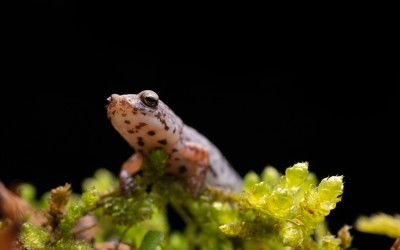 |
Friday, December 2, 2022
Finding Four-toed SalamandersProtecting wildlife is hard. Every species has a unique set of environmental needs and is faced with a unique set of challenges and threats. These constraints mean that wildlife conservation can get very complicated, very quickly, when... Category: In the News |
 |
Monday, November 7, 2022
Your Choice of AmmunitionYour Choice of Ammunition Video of Your Choice of Ammunition An informational video for NYS hunter education courses. Category: In the News |
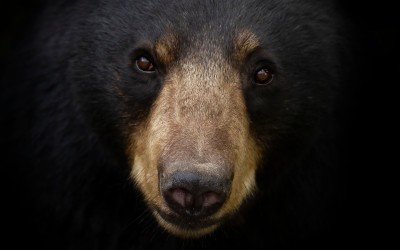 |
Thursday, November 3, 2022
The Itch Black Bears Can't Scratch is Spreading...The bear was miserable, rubbing itself incessantly against the tree. It had been scratching the relentless itch so much that its fur had fallen out and its skin had thickened to a leathery crust. Because it spent all its time... Category: In the News |
 |
Wednesday, August 24, 2022
Mathematical Strategies To Restore EcosystemsWell-designed quantitative analyses provide managers with guidance to work towards maintaining sustainable wildlife populations. Such analyses include investigations of population trends, probing of novel information to fill gaps in... Category: In the News |
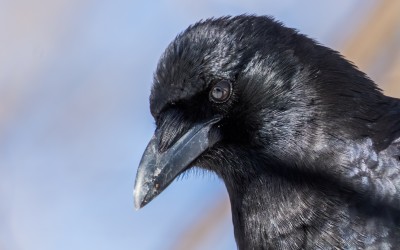 |
Monday, July 18, 2022
Surviving West Nile Virus Infection - Crows Fighting BackAs summer moves into high gear, the number of cases of West Nile virus (WNV) infection in birds is also rising. West Nile virus is transmitted to birds by infected mosquitoes. While all species of birds are susceptible to infection and... Category: In the News |
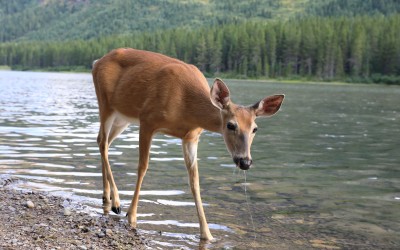 |
Tuesday, July 5, 2022
Understanding CWD Outbreak PotentialWe regularly summarize complicated natural phenomena into simple numbers and then use those numbers to make basic choices. For example, instead of depicting all the drivers of weather that coalesce into a daily high temperature,... Category: In the News |
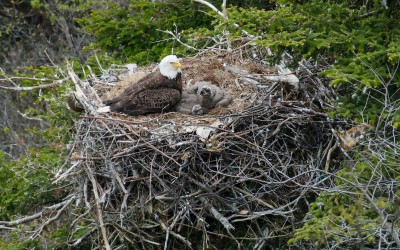 |
Thursday, January 13, 2022
Lead in eagles: Where do we go from here? Update 5/12/23UPDATE Our research into the impact of lead on bald eagle population health continued with a targeted focus on New York State's eagle population. Dig deeper into the threat of lead with "Population impact to bald eagles by ingested... Category: In the News |
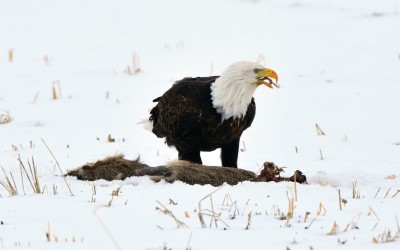 |
Tuesday, November 16, 2021
What You Leave Behind - Lead Ammo Risk to Wildlife SpeciesWhat's in that gut pile? A common practice for most big game hunters includes field-dressing harvested animals in the field. Yep, that means removing the internal organs - appropriately called the gut pile - and leaving it behind.... Category: Wildlife 411 |
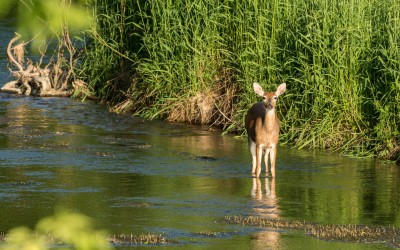 |
Thursday, August 5, 2021
Epizootic Hemorrhagic Disease in White-Tailed DeerCurrent status of EHD in NYS (Updated Oct 2, 2025) We've had one positive case of EHD in Niagara County. A dead male deer was found at the edge of a pond, appearing normal. Samples were submitted within 24 hours for diagnostic... Category: Disease Watch |
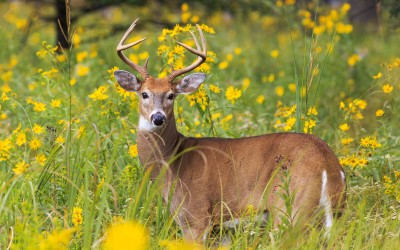 |
Thursday, August 5, 2021
SARS-CoV-2 and Wildlife UpdateA recent study by USDA found that one-third of samples collected from free-ranging white-tailed deer in Illinois, Michigan, New York, and Pennsylvania had SARS-CoV-2 antibodies, including 18% of the samples collected in New York.... Category: Disease Watch |


